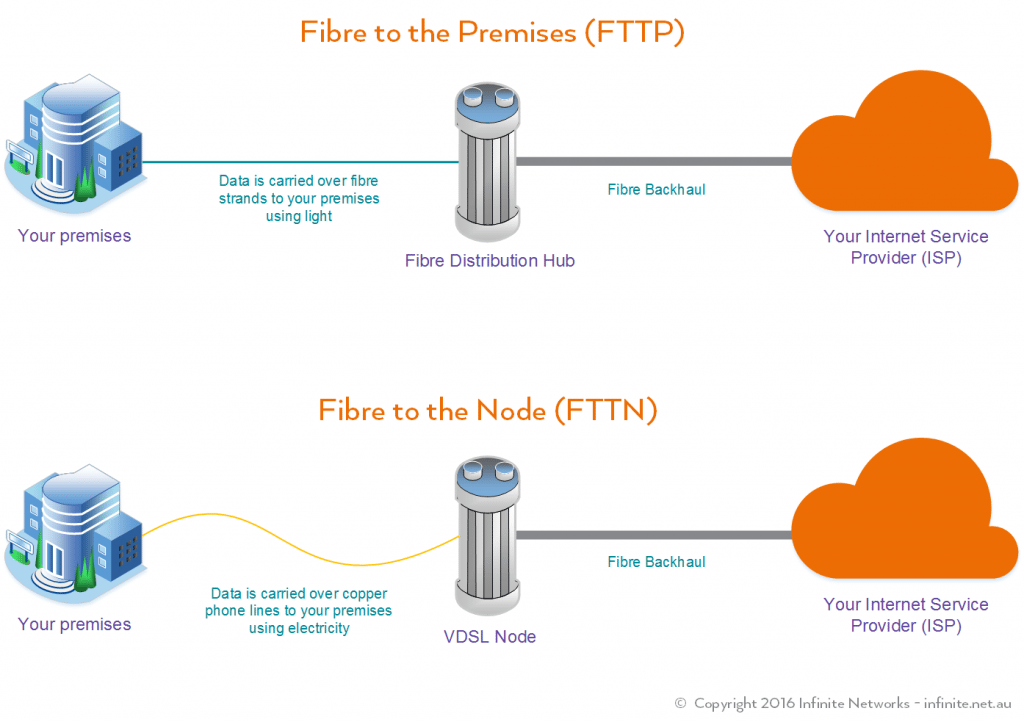By now, you’ve probably heard about NBN. The National Broadband Network will take over Australia by 2020, given the fact that every Australian household will be connected to the service. Once NBN is made available in your area, you have up to 18 months to make the switch, and after this period of time, your old fashioned internet connection will be interrupted.
If you’ve done research regarding NBN, you’ve probably encountered some terms that you are not familiar with, which is ok because the whole concept itself can get pretty confusing at times. Speaking of these terms, in this article we will discuss about FTTP and FTTN and compare the technologies in order to give you a better idea about the the NBN overall.
What Does It Mean?
It doesn’t make any sense to start talking about these technologies before explaining what they actually are.
First of all, FTTP (Fibre to the Premises) means that fibre will be connected all the way to a certain place where you want to have internet access. Second of all, FTTN (Fibre to the Node) means that fibre will be connected to a mini-exchange or a node that is near the place where you want internet access, and from that point it will further be connected all the way to that place through copper line.
Why Fibre Optic Cable?
The two technologies, FTTP and FTTN, are both based on fibre optic cable. Some people might be wondering why they chose fibre optic, when they could have gone with traditional fibre, copper or other technologies. Well, this type of technology is wanted because it is able to provide faster internet speed, which means faster uploads and downloads.
It is estimated by NBN that by 2021, almost 21% of premises in Australia will have an NBN connection based on FTTP. Also, almost 54% of premises will most probably connect to the NBN through FTTN.
FTTP Vs. FTTN
Bad news is that you won’t be able to choose what type of fibre optic technology will be installed in your home, because it depends on which one is made available in your area. Let’s compare the two technologies, regarding some of the most important focus points:
- When it comes to speed, FTTP is the faster one for sure, given the fact that the download/upload speed is almost double in comparison with FTTN. Although, when it comes to speed, what matters most is the NBN speed tier that you choose when you consult one of the NBN providers.
- When it comes to the money, you’ll have very similar pricings for both FTTP and FTTN. The difference comes when it’s time to choose one of the NBN plans, which have different prices depending mainly on speed.
- A key factor when it comes to choosing the better technology, is the fact that FTTN is much faster to rollout than FTTP. Also, it is faster to deploy, given the fact that it uses existing copper lines.
Regardless which one of the technologies you’ll get installed, they both have the same purpose: providing every Australian household with a better, faster internet connection. Unfortunately, you are not able to choose which one you’ll get, that depending strictly on where you live.


